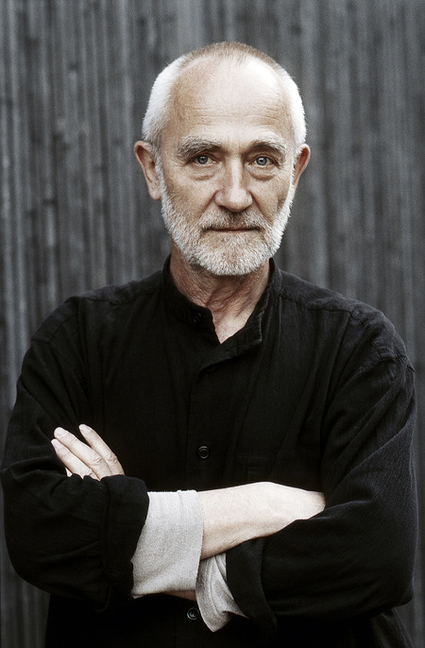The NAI is organising a lecture by the Swiss architect Peter Zumthor on Thursday 17 June. He is famous for projects like the Thermencomplex in Vals (Switzerland), the Kunsthaus in Bregenz (Austria), and the Kolumbia Kunstmuseum in Cologne (Germany). In 2009 Zumthor was awarded the Pritzker Architecture Prize for his entire oeuvre in 2009. His projects are characterised by craftsmanship and control of the whole process from the design to the level of the details. Zumthor claims to be less interested in what his buildings look like than in how they ‘are’: how people look at them, feel them, smell them, and how they are made. The lecture will be followed by a conversation between Ole Bouman and Peter Zumthor after which there will be an opportunity to ask questions. The lecture is organised jointly with De Meelfabriek C.V. and will be held at the De Doelen congress building in Rotterdam.
In dialogue with the surroundings
Peter Zumthor’s designs attribute great importance to the significance of the location. Each design is preceded by a precise observation of the surroundings, taking into account the spatial qualities, form and history of the site, as well as the traditions and identity of the region. It is Zumthor’s explicit wish to design buildings that in the course of time become firmly anchored in their setting, but which also engage in critical dialogue with it. Zumthor’s interpretation of the genius loci therefore seems to guide his designs. For instance, he makes use of materials in his buildings that are available locally and incorporates local building traditions in the building process. He pays special attention to how light enters the building, which entails a relation with its natural surroundings. The ideal situation for Zumthor is one in which the building looks as though it has been there for years and is hardly noticed by passers-by after a while, but in which at the same time the location is unimaginable without it.
Old and new in equilibrium
A substantial part of the oeuvre of Peter Zumthor consists of buildings that nestle in a context of historical importance. Before Zumthor began his own practice, he gained years of experience working on the restoration of historic buildings for the Cantonal Historic Buildings Department in Graubünden, Switzerland. But while the goal of the restoration architect is to bring historically valuable buildings back to their original state, Zumthor’s projects aim to achieve a proper equilibrium between old and new. His architectural interventions take on significance because, while preserving the heritage, they engage closely with the present and thereby transcend the local context. Zumthor: ‘When I come across a building that has developed a special presence in connection with the place it stands in, I sometimes feel that is imbued with an inner tension that refers to something over and above the place itself. It seems to be part of the essence of its place, and at the same time it speaks of the world as a whole.'
De Meelfabriek
Peter Zumthor is currently working on a project in which this relation between old and new is a very important theme: the redevelopment of De Meelfabriek in Leiden, a complex of industrial buildings situated on a bastion of the defence works of Leiden. It is his first project in the Netherlands. Plans were made for the preservation and redevelopment of this site at the beginning of the century. A competition was organised in which architects were asked to breathe new life into the area with new functions while preserving the industrial heritage. Peter Zumthor’s firm won the competition and subsequently drew up the master plan for the redevelopment of the area. Building will start in 2011.
Peter Zumthor
Peter Zumthor (1943) has been trained as a cabinet maker in his father’s studio. He studied at the Kunstgewerbeschule, Vorkurs and Fachklasse with further studies in design at Pratt Institute in New York. In 1967, he was employed by the Canton of Graubünden, Switzerland in the Department for the Preservation of Monuments to realize some restorations. He established his own practice in 1979 in Haldenstein, Switzerland. Since 1996, he has been a professor at L'Accademia di architettura at Universitá della Svizzera Italiana, Mendrisio. Zumthor won many awards, including the Carlsberg Architecture Prize in Denmark in 1998 and the Mies van der Rohe Award for European Architecture in 1999. He won the Pritzker Architecture Prize for his oeuvre in 2009.
